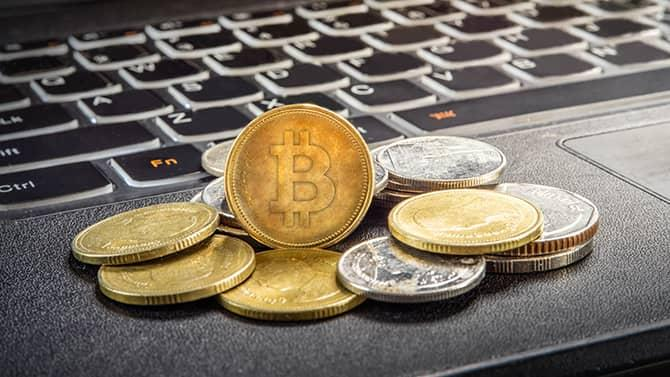I will cover the topic of payment with cryptocurrency and how it encompasses the likes of Bitcoin and Ethereum.
I will explain the advantages and my touch on the payment system challenges. My goal is to help the reader understand everyday payment with cryptocurrency.
What is Cryptocurrency?
Cryptocurrency refers to digital or virtual currency secured through cryptography, making counterfeiting or double spending nearly impossible.
Unlike government-issued currency, cryptocurrencies are decentralized digital networks or blockchains, with the functionality of recording Securely, transparently, and chronologically all transactions.

Well-known cryptocurrencies are Bitcoin, Ethereum, and stablecoins like USDT. The use of cryptocurrencies are payments, investments, and cross-border value transfers without intermediaries like banks.
While offering quick transactions, low costs, and privacy, there are risks such as price volatility, regulatory ambiguities, and cybersecurity, making cryptocurrencies a cautious use.
Using Cryptocurrency for Payments

Example: Paying for an Online Purchase with Bitcoin
Step 1: Set Up a Crypto Wallet
- Select a digital wallet (software, mobile, or hardware).
- Create an account, and record your private keys securely.
Step 2: Buy Bitcoin
- Buy Bitcoin from a cryptocurrency exchange using a bank account, debit, or a credit card.
- Move Bitcoin to your wallet.
Step 3: Choose a Merchant Accepting Bitcoin
- Find an online shop that accepts Bitcoin for payments.
- Select the items you want.
Step 4: Initiate Payment
- Choose Bitcoin for the payment option at the final step.
- The shop will show you a Bitcoin address or a QR code.
Step 5: Send Bitcoin from Wallet
- Go to your wallet, type in the shop’s Bitcoin address, and the amount.
- Execute the payment.
Step 6: Wait for Confirmation
- Bitcoin payments are confirmed and posted to the blockchain in a few minutes.
- The shop gets the money, and you complete the purchase.
Step 7: Transaction Complete
- You and the shop can see the payment on the blockchain.
- This is for your reference.
How Cryptocurrency Payments Work
At their core, cryptocurrency payments use blockchain technology for processing and keeping electromagnetic records of transactions. Each transaction is logged into a digital, decentralized, and secure ledger, which eliminates reliance on banks and intermediaries. That is, cryptocurrency transactions fully rely on technology and do not need a third party to execute a transaction.
To understand this better, think of sending a cryptocurrency payment as sending an email. It is straightforward and virtually instantaneous. The sending of a payment on the other hand, is like posting a letter which involves several interlopes and takes considerably longer to deliver.
To illustrate this, consider the example of paying for a flight using Solana (SOL). This transaction initiates the process of using Solana (sol) cryptocurrency for making payments.
This involves the transaction being sent to a blockchain network made up of nodes. These nodes are independent computers around the world that ensure the transaction is legitimate and the coins are actually owned by the sender.
As soon as the transaction has been finalized, the details are recorded in a digital block. New blocks are added forming an unbreakable chain of blocks as each new block is added and attached to the block that preceded it. This is where the term ‘blockchain’ is derived.
Because the blockchains are stored on different computers around the world, the information is virtually impossible to change. In order to change a transaction, alterations would have to be made to over 51% of the network’s nodes which is a nearly impossible undertaking in terms of the cost and resources involved.
At the end of the day, all that can be said with certainty about the cryptocurrency is that it has secure, transparent, and efficient payments. This really is a game changer in terms of the value that is transferred around the globe.
Benefits of Using Cryptocurrency for Payments
Faster Transactions
Payments through cryptocurrency is done in minutes, unlike traditional banking which can take days.
Lower Transaction Fees
Fees are lower or nonexistent in international transfers. Banks do not charge and there are no fees from intermediaries.
Enhanced Security
Fraud and chargebacks are nearly impossible because the transaction is recorded on the blockchain and the user is encrypted.
Global Accessibility
Regardless of the country, a user can send or receive cryptocurrency without banking restrictions.
Financial Privacy
Payments can be done without the user having to expose their bank accounts or any other personally identifiable financial information.
Potential for Financial Inclusion
People in underdeveloped and developing regions can access and use financial services.
Immutable Transaction Records
There is no deleting or altering a transaction on a blockchain, which is unlike traditional banking.
Risks and Challenges of Cryptocurrency Payments

Price Volatility
Cryptocurrencies are known for their rapidly changing values, which affects payments and their costs.
Regulatory Uncertainty
Cryptocurrencies are legal in some countries and illegal in others, with constant changes in tax regulations.
Security Risks
Automated hacking, phishing, and the loss of private keys are permanent ways to lose funds.
Limited Acceptance
The practical use of cryptocurrency is limited since many merchants and/or services do not accept it.
Irreversible Transactions
Unlike credit cards, crypto transactions are permanent, and any mistakes made cannot be undone.
Technical Knowledge Required
Users of cryptocurrency need to comprehend wallets, addresses, and the blockchain to use it safely.
Potential Scams and Fraud
Unscrupulous vendors and fake requests for payment can lead users to lose money.
Best Practices for Using Cryptocurrency Safely
Use Secure Wallets
For safely storing crypto, select hardware wallets or trustworthy software wallets.
Protect Private Keys
Keep your private keys and seed phrases to yourself, and if possible, keep them stored offline.
Enable Two-Factor Authentication (2FA)
Secure your accounts and wallets with an additional layer of protection.
Verify Payment Details Carefully
Check and confirm wallet addresses and the amounts to be sent before processing any transactions.
Use Reputable Exchanges
Use known and regulated platforms for buying, selling, and transferring crypto.
Stay Updated on Regulations
Understand the legislation, taxes, and compliance crypto payment law in your jurisdiction.
Avoid Public Wi-Fi for Transactions
Always use safe networks for making payments to eliminate the risk of hacking or interception.
Keep Software Updated
Update your wallets, apps, and security programs to ward off possible vulnerabilities.
Current Trends in Cryptocurrency Payments
| Trend | Description / Insights |
|---|---|
| Rise of Stablecoins | Stablecoins – especially USDT and USDC – are dominating payment volumes. |
| Corporate (B2B) Adoption | A large portion of stablecoin payments is coming from business-to-business transactions. |
| Layer‑2 Payment Networks | Layer-2 blockchains like Base, Arbitrum, and Optimism are seeing high stablecoin usage for payments. |
| Geographic Variation in Adoption | Different regions show different crypto payment preferences — e.g., Asia favors USDT, Nigeria leans into altcoins. |
| Growing Merchant Acceptance | More merchants are accepting crypto payments; a significant % prefer settlement in crypto. |
| Regulatory Clarity | New regulations — like U.S. stablecoin legislation (GENIUS Act) and EU’s MiCA — are shaping payment infrastructure. |
| Mobile Wallet Growth | Use of crypto mobile wallets is rising sharply, driven by retail payment use cases. |
| Bitcoin Lightning Network Uptick | More Bitcoin payments are happening via the Lightning Network for low-fee, instant transactions. |
Setting Up a Wallet for Crypto Payments
A digital wallet is a prerequisite for performing cryptocurrency payments. Wallets provide a safe way to hold, send, and receive cryptocurrency. Some forms of wallets include mobile, web, desktop, and hardware wallets. All options have varying degrees of convenience and security.
When setting up any type of wallet, the process is relatively the same:

Choose a Wallet Application: You’ll first need to decide which wallet type is best for you. For security, hardware wallets such as Ledger and Trezor are best for long-term storage, whereas software wallets like MetaMask and Kraken Wallet will be more convenient for daily transactions. Exchange wallets (like Coinbase and Kraken) are typically designed for beginners and might provide less control over your private keys.
Install the Wallet: You can download and install the wallet app on your chosen device, or access it via the official website or browser extension. Always download from the trusted sources to avoid phishing attempts.
Secure Your Wallet: Create a strong password on your crypto wallet and back up your recovery phrase (seed phrase). Keep it secure offline and never tell anyone about it—that phrase is how you recover your wallet should you lose your device.
Add Funds: You can fund your crypto wallet using exchanges that accept credit cards, debit cards, and bank transfers. Purchase your crypto and transfer it to your wallet’s public address to use it to make payments.
Refer to guides like “How to Keep Your Crypto Safe” for more information on best practices. It covers wallet security extensively.
Paying With Bitcoin and Other Cryptocurrencies
Paying with Bitcoin and other digital currencies is straightforward and involves the following steps:
Get the Recipient’s Wallet Address: This address can be displayed as a QR code or a unique string of letters and numbers. Copy it exactly as it is to avoid any errors.
Access Your Wallet: Your digital wallet should be opened and the option to send crypto selected.
Enter Payment Details: You’ll need to paste the recipient’s address, choose the appropriate crypto, and enter the transaction (network) fee.
Confirm and Wait for Verification: Once you send your transaction, you’ll need to get confirmation on the blockchain. Depending on the crypto network and the fee settings, this could take some time.
Tips for Using Cryptocurrency for Payments
Choose the Right Cryptocurrency
- Being that payment cryptocurrencies are accepted globally, choose Bitcoin, Ethereum, and stablecoins like USDT or USDC.
- Choose which cryptocurrencies with regards to transaction, speed, fees, and volatility. When using stablecoins the risks for price fluctuations will be eliminated.
Use Secure Wallets and Platforms
- Use wallets that are considered to be the most secure (hardware wallets, and other wallets that are mobile or desktop reputable).
- Backup your private keys in a secure location and set up 2FA (two factor authentication).
Check Merchant Acceptance
- Make sure to check that the merchant will allow you use the cryptocurrency that you were planning to use.
- Some merchants may only allow certain coins or payment systems.
Stay Aware of Legal and Tax Regulations
- Make sure that you are familiar with your country’s payment crypto regulations and rules.
- Make sure you keep a record for tax purposes and reporting of the transactions, as there may be taxes applicable to crypto payments.
Monitor Market Volatility
- The prices of crypto are subject to change with little or no warning.
- If you are in a position to, you may want change your cryptocurrency to a stablecoin for payment transactions to prevent losing value during periods of high volatility.
Pros & Cons
| Pros | Cons |
|---|---|
| Fast and Global Transactions – Payments can be sent instantly across borders without intermediaries. | Volatility – Cryptocurrency values can fluctuate rapidly, affecting payment value. |
| Lower Transaction Fees – Often cheaper than credit cards or bank transfers. | Limited Merchant Acceptance – Not all businesses accept crypto yet. |
| Enhanced Security – Blockchain ensures secure, tamper-proof transactions. | Irreversible Transactions – Mistakes in addresses or amounts cannot be undone. |
| Privacy and Anonymity – Transactions can be made without sharing personal banking info. | Regulatory Uncertainty – Legal and tax rules vary by country and can change. |
| Financial Inclusion – Provides access to digital payments for unbanked populations. | Technical Knowledge Required – Users must understand wallets, keys, and network fees. |
| Innovative Payment Methods – Supports new tech like smart contracts and Layer-2 solutions. | Network Congestion & Fees – Some blockchains experience slow processing and high fees during peak times. |
Conclusion
Cryptocurrency provides numerous benefits, such as instantaneous transactions, reduced costs, worldwide reach, and increased privacy. Similarly, there are considerable downsides, with major ones being unstable pricing, unclear and varying legislation, and security issues.
Educating oneself on the pros and cons, as well as utilizing specific recommended guidelines like secure wallets and transaction authentication, can help individuals and companies use cryptocurrencies safely as a supplementary payment option.
Although cryptocurrencies are still far from being fully mainstream, they are increasingly transforming digital payments and complementing established payment methods.
FAQ
What is cryptocurrency payment?
A cryptocurrency payment is a transaction where digital currencies like Bitcoin or Ethereum are used instead of traditional money to buy goods or services.
Can I pay with cryptocurrency anywhere?
Not yet. While adoption is growing, only merchants and platforms that accept crypto as a payment method can process such transactions.
Are crypto payments faster than bank payments?
Yes, most crypto transactions are processed within minutes, especially for cross-border payments, unlike traditional banking systems that may take days.
Is it safe to pay with cryptocurrency?
Crypto payments are secure due to blockchain encryption, but users must protect their wallets, private keys, and beware of scams.








